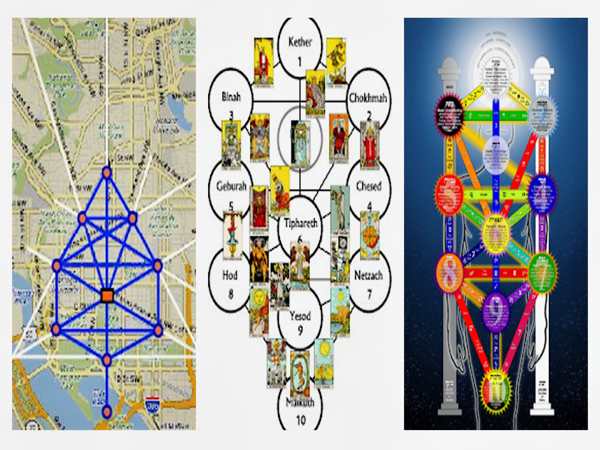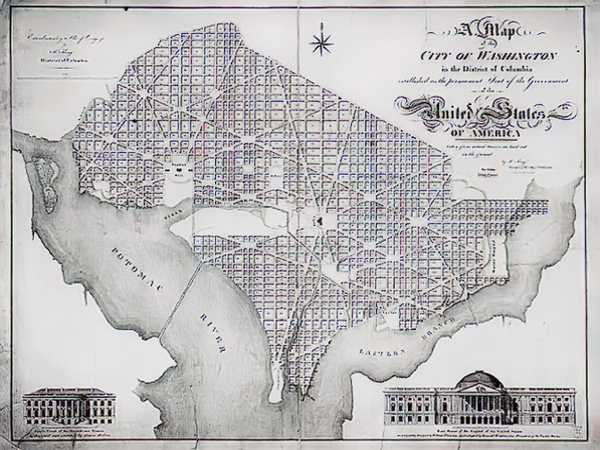Symbols are more than just shapes or signs; they embody deep meanings and intentions, representing everything from religious beliefs to chemical compounds and secret societies. Since the dawn of civilization, symbols have played a crucial role in human communication. They are the foundation of written language, with numbers and letters serving as fundamental symbols. Yet, despite their omnipresence, many people remain unaware of the true significance of the symbols around them.
The Hidden Language of Symbols
Consider this: Did you ever have a class in high school dedicated to the study of symbols? Most likely not. This omission might be intentional. If people fully understood the symbolism embedded in Washington D.C.’s layout, it could illuminate the origins and influence of various secret societies and organizations that shape our world today.
Symbols are not just decorative elements; they convey powerful messages and ideas. The layout of Washington D.C., for instance, is a canvas of symbolic geometry that reveals much about its creators and their intentions. As you delve deeper into the city’s design, you’ll uncover a web of hidden meanings, steeped in history and mystery.
Freemasons: The Architects of Symbolism
One of the most influential secret societies linked to Washington D.C.’s design is the Freemasons. While some argue that the Freemasons are no longer a secret society, their historical impact and symbolic influence remain undeniable. By analyzing Masonic symbols and their placements throughout the city, we gain insight into their significance.
For instance, when you examine a map of Washington D.C. with tools like a pencil, ruler, and compass, you might be surprised to discover patterns such as pentagrams, hexagrams, triangles, and even an inverted pentagram. These symbols, prominently featured in the city’s layout, are not mere coincidences. They reflect the Freemasons’ deep-rooted influence and their desire to embed symbolic meaning into the fabric of the nation’s capital.
The Geometry of Washington D.C.
The geometric layout of Washington D.C. is meticulously crafted, aligning with symbols derived from ancient Egyptian practices. The Freemasons’ use of these symbols is no accident. Ancient Egyptians, known for their astronomical expertise, built structures like the pyramids with precise alignments to celestial bodies.

The Great Pyramid of Giza, for instance, showcases remarkable astronomical accuracy. The pyramid’s chambers align with specific stars, and its angles reflect the tilt of the Earth’s axis. This precision, achieved with primitive tools, remains a mystery. But the influence of this ancient knowledge is evident in the design of Washington D.C.
By overlaying a map of Washington D.C. with diagrams of the Great Pyramid’s angles, you can see striking similarities. The city’s streets and landmarks echo the geometric angles of the pyramid. This alignment suggests a deliberate attempt by the Freemasons to infuse the city with ancient symbolic significance.
The Tree of Life and D.C.’s Layout
The “Tree of Life,” originating from Sumerian traditions and depicted in various forms over centuries, also influences the layout of Washington D.C. This symbolic diagram, which represents spiritual paths and connections, mirrors the arrangement of major landmarks in the city.
For example, the Jefferson Memorial corresponds with Malkuth, representing “the kingdom” in Kabbalistic terms. The Washington Monument aligns with Yesod, the “foundation,” while the White House symbolizes Tiphereth, “Beauty” or the human soul. The apex of the “Tree of Life” aligns with the highest spiritual level, Kether, which parallels the placement of significant buildings and symbols in D.C.
Moreover, the “All-Seeing Eye” on the dollar bill, located just beneath the pyramid’s capstone, points to the House of the Temple—the headquarters of the Scottish Rite of Freemasonry. This alignment, as highlighted in Dan Brown’s novel The Lost Symbol, underscores the Freemasons’ influential presence in the city.
The Intersection of Ancient Knowledge and Modern Design
The correlation between Washington D.C.’s layout and ancient Egyptian geometry suggests a purposeful design. The city’s layout, rich with symbolic significance, likely reflects an effort to harness specific energies or align with historical spiritual traditions. This blend of ancient knowledge and modern design creates a unique narrative about the city’s origins and its connection to secret societies.
The use of sacred geometry, such as the 23.5-degree tilt of the Earth’s axis, in the design of Washington D.C. is a testament to the Freemasons’ deep engagement with historical and spiritual symbolism. Whether intentional or coincidental, this alignment with ancient knowledge adds a layer of intrigue to the city’s design.
Conclusion
Washington D.C.’s layout is a masterclass in symbolic and geometric design. The presence of Masonic symbols, the alignment with ancient Egyptian knowledge, and the integration of the Tree of Life into the city’s geography reveal a deeper narrative about the city’s origins and its hidden influences.
By recognizing and understanding these symbols, we gain insight into the city’s complex history and the secret societies that may have shaped it. The alignment of these symbols and patterns is not merely a coincidence but a reflection of an intricate design meant to convey profound meanings and connections.

